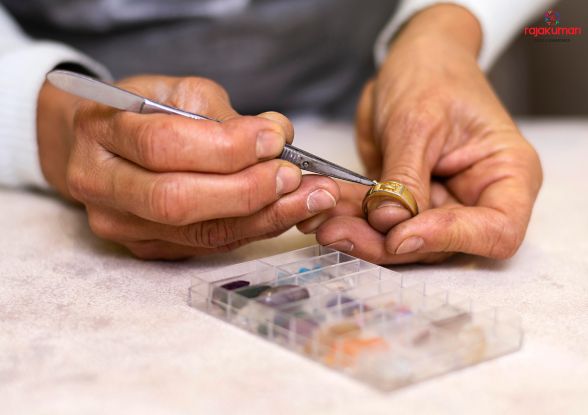4Cs of Diamonds - Diamond Buying Guide
As they say- ‘Diamonds are forever’. It never loses its brilliance and is the hardest natural material found on earth. It is a conflict material found in the womb of the mother earth. This isotope of carbon has an entirely different set of properties. After gold, it is the most widely used piece of Jewellery. This perfect piece of jewellery has an innate quality to preside over hearts.
We all love diamonds, but do we know how to grade them to make the right investment? Are we aware of the standards? Let’s take a walk through the process of proper grading and see if we could evaluate the purchase we made.
In the olden days, before the Gemological Institute of America (GIA) formed the standards to measure the quality of diamonds, words like river, water and cape were used to describe colour grades. The terms such as made well and made poor were used to describe the cut and finish of the diamond.
This was ambiguous and there was no clear standard of grade that was accepted universally. Then Mr Robert M Shipley came up with the 4Cs of diamond grading that instantly became popular and were accepted worldwide. The 4Cs stand for colour, clarity, cut, and carat weight. This revolutionized the diamond world. It came in handy when grading diamonds by both traders and customers.
Now let’s break it down to each C and see how to go about grading.
The quality of the diamond is determined by both its natural state and what the artisan or cutters decide to do with it. The colour, clarity, and carat are based on its natural state, only the cut can be controlled by humans.
Diamonds are of different shapes- round, oval, pear, marquise, emerald, and heart. Except for the round, the other shapes are not graded by GIA. There are four things to consider when going for a fancy shape other than round.
Length-to-width Ratio- For shapes like emerald cuts and pears a ratio of 1.50:1 to 1.75:1 is considered.it is important as the gems that are too long and narrow tend to break.
Line Symmetry- When a line is drawn in the middle there must be symmetry in the stone despite its shape. That makes the diamond look attractive.
Smooth Curves- the curves must be smooth and should look perfect. The fancy designs must not have any harsh-looking flat spots.
Defined Shape- The shape of the diamond must be clear and well-defined. It should not look uneven and the edges and surfaces must have that perfect shape that was initially intended.
The first C is Cut
Cut quality is determined by the diamond’s proportions, design and finish. The size and angles of the diamond’s facets are determined by proportions. The design has to do with the weight ratio and durability. Polish and symmetry are considered to determine the finish.
When considering the diamond’s cut quality, look for brightness, fire and scintillation. Brightness refers to the light reflected from the facets. Fire is the colourful flashes the viewer sees. Scintillation is the pattern of light and dark areas that the viewer sees on the diamond.
Next comes colour
The white diamonds are not colourless, they have traces of yellow, brown or grey in them. That is why the GIA has set a colour grading system from D to Z, D being the least coloured and Z being the most.
If you are going for yellow or rose gold then go for G or lower that will not contrast. The light will look warmer anyways with white diamonds. If you want white gold or platinum rings go for G-H or higher grade stone.
The Third C is Clarity
This refers to the inclusions or blemishes that a diamond may have visible at 10 X magnification. The standards are measured in VS2, SI 1 and VVS2. It all depends on how good the viers vision is and how much they want to spend.
Then comes fluorescence- An additional factor to consider
It is the glow of the diamond that is emitted when exposed to UV light. If the colour stones emit blue colour then it is costlier than the ones emitting yellow, red, green and white.
The final C is the Carat
It is not much, but the carat refers to the weight of the diamond which has less to do with its quality and pricing. The metric standard for a carat is 200 milligrams. Each carat is formed of 100 points. If a diamond is 0.25 carats then it is referred to as a 25-pointer.
If you are looking for that perfect stone, visit Rajakumari Gold and Diamonds, the best Diamond Jewellers in Kerala. At Rajakumari Gold and Diamonds, you will find a vast collection, for yourself and your loved ones. Earn their love with this precious and eternal gift. Rajkumari Gold and Diamonds is the leading Jewellery in Kerala and the team knows how to pamper you with their collection.
So let yourself be pampered and come out feeling great about your investment.

.jpg)
.jpg)
.jpg)
